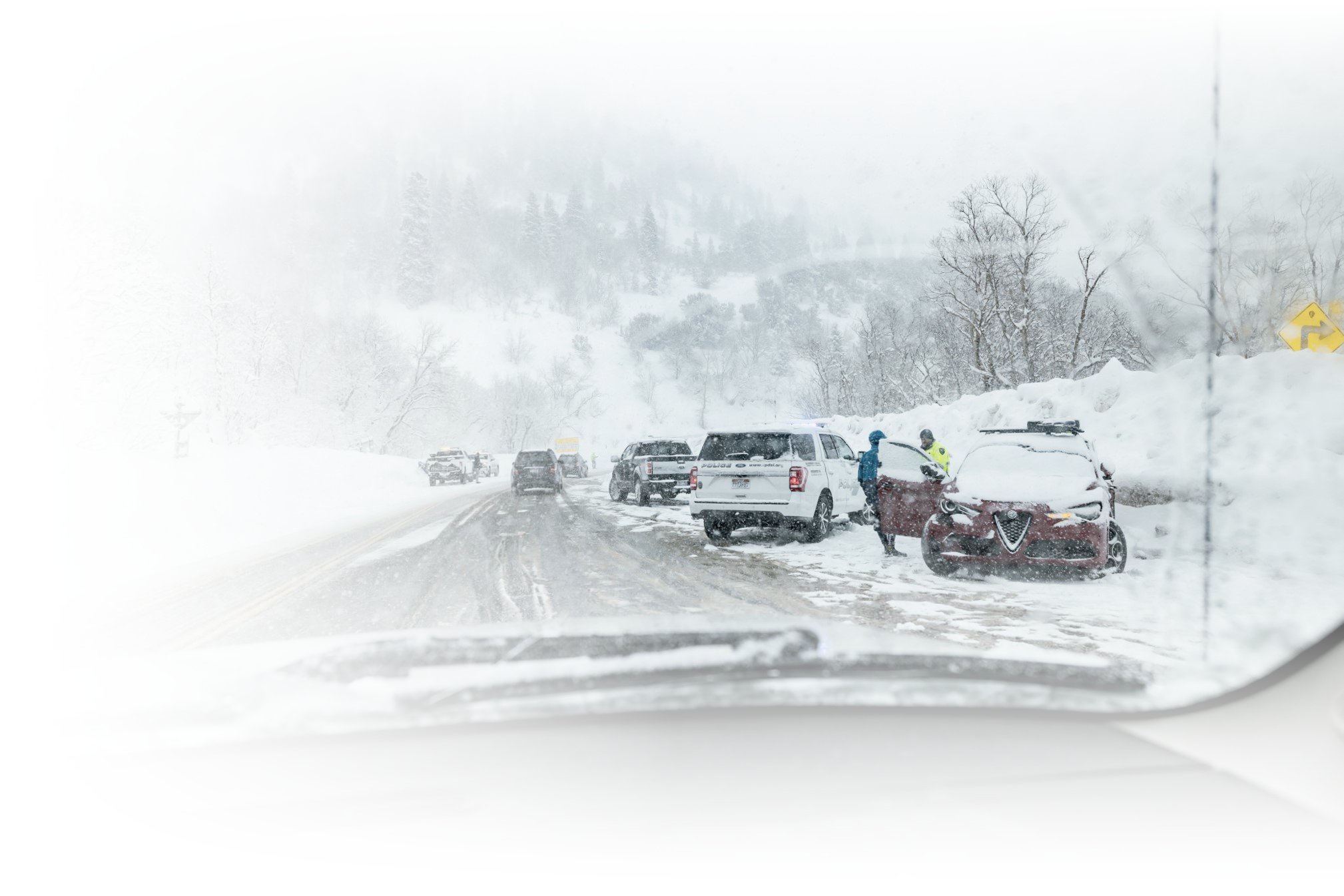Alta sits at the end of Little Cottonwood Canyon, a 13 mile long road that crosses 64 major avalanche paths and has the highest avalanche hazard index of any major road in the United States. Here are some tips, tricks and resources to help you travel Highway 210 safely this winter.
Utah Traction Laws
The Traction Law Utah's administrative rule (R20-6) is enforced by the Utah Department of Transportation (UDOT) and local law enforcement during severe winter conditions to ensure vehicles are safely equipped. It mandates traction devices like snow tires, chains, or snow socks on designated roads. Enforcement occurs when authorities determine that road conditions warrant it. Drivers are notified through road signs and UDOT’s traveler information systems.
Requirements by Vehicle Type:
AWD/4WD Vehicles:
- Minimum: M+S or M/S-rated tires.
- Preferred: Chains, snow socks, or 3 Peak Mountain Snowflake (3PMSF) tires for best traction.
2WD Vehicles:
- Minimum: 3PMSF tires on all four wheels.
- Acceptable alternatives: Chains or snow socks.
2024–25 Traction Law Enforcement
This winter, UDOT has received funding through HB 488 to increase Traction Law enforcement in the canyons. On Traction Law days, UDOT and local law enforcement will conduct vehicle checks at the mouth of Little Cottonwood Canyon during morning uphill travel and evening downhill traffic. Only vehicles that meet the Traction Law requirements will be allowed to travel the canyon.
Here's how you can keep things flowing and allow UDOT to ensure everyone's safe travels:
Sign up for the UDOT Sticker Program:
- The UDOT Sticker Program certifies that your vehicle is properly equipped with the right traction devices and your tires have at least a 5/32 tread depth.
- Officers will be checking your stickers instead of your tires—keeping traffic moving and getting you up the canyon quicker!
- Get your FREE vehicle inspection and sticker at these participating locations >
- Install traction devices (chains, snow socks) in designated chain-up areas before checkpoints.
- Especially if you’re inexperienced in winter mountain driving.
- Avoid distractions and excessive speeds—traction devices can’t prevent all accidents.
- Be alert for parked law enforcement vehicles and officers at checkpoints.
- Properly equipped vehicles will reduce underprepared traffic issues but won’t eliminate delays caused by snow, ice, poor visibility, or driver skill.
- Review maps of checkpoints and chain-up areas before heading into the canyons.
More information on Utah Traction Laws & Enforcement >
Pre-canyon checklist
Check the Weather
- Review past, present and future weather conditions.
Check Road Status
- Check for any closures, restrictions or delays.
- Confirm whether the Traction Law is in effect.
Check Vehicle Readiness
- Your vehicle must equipped with the appropriate traction control devices & ready for checkpoint inspections.
- The vehicle can make it up and down the canyon—fuel up & check your brakes before you enter the canyon.
- Pack the essentials—warm clothing, water, food and chargers.
Check Yourself
- Are you skilled or experienced in driving in the mountains during winter storms?
- Are you comfortable and confident driving in the mountains during winter storms?
Plan B
Things don't always go according to plan but don't worry—we have plenty of solutions to safely get you up and down the canyon. If you are not comfortable driving or your vehicle isn't Traction Law equipped we suggest leaving the driving to the professionals.
- UTA Ski Bus >
- Alta Shuttle >
- Private Transportation >
- Hop in the car with your friend who has a UDOT Cottonwood Canyons Sticker—carpooling is cooler than driving solo.
Know your RESOURCES
Know where to find important and up-to-date information about driving Highway 210.
